Armenian Studies Program
Mastara
St. John (Armenian-St. Hovhannes)
Niche-buttressed square
Type: Niche-buttressed square plan without columns
Location: Talin
Date: VIth or VIIth century
Evidence For Date:
Important Details:
Condition:
Reconstruction:
History & commentary:
The Church of St. John in Mastara, late 6th-early 7th century, is located in the village
of the same name in the Talin district of Armenia.
A nitch-buttressed square, with apses extending on its four sides, culminates in an imposing dome that governs the whole of the church’s interior. Four large squinches in combination with overhanging arches provide a solid foundation for the huge octahedral drum of the dome.
The apses radiate from the spacious central square that is surmounted by a cupola supported by large squinches and massive apse walls. Three apses are polygonal on the exterior, while the east apse is flanked by two rectangular chambers that are embedded in the east end of the church. The entrance is from the west.
The sixteen sided drum is constructed in a form that is unusual in Armenian architecture. Above the meeting points of the eight large squinches there rise eight smaller squinches. The large dome divided into twelve panels covers the entire central square.
Its architectural conception heralds another stage in the development of simple cruciform
compositions, a transition to complex church designs like those in Avan and St Hripsime
in Etchmiadzin. The works of medieval architecture in Mastara include, among others,
numerous khatchkars (cross-stones).
The historical region of Aragatsotn is rich in interesting monuments. One of them
is the church of St. Hovhannes in the village of Mastara. It stands out among central-domed
cruciform (inside and outside) churches, like the big church in Artik, the church
of St. Gregory of Arichian cloister, St. Sarkis in Voskepar and Arakelots in Kars
(Xc).
Another version of this type is the temple in Bagaran (first half of VII c), in which
unlike the temple in Mastara and like Echmiadzin’s temple, four pylons carrying the
dome are added to the central praying hall, on account of which a completely different
constructive system of the passage to the dome is formed.
In one of five epigraphic inscriptions at Mastara temple, Gregory Vanakan is mentioned
as a builder, another one records the repair of the church in 891. Many points of
view exist about the dating of the temple (V-VI, VI- VII cc). Some consider if to
be built in VII c with the preserved remainders of still existing more ancient church.
For various reasons the last version is considered more probable.
-
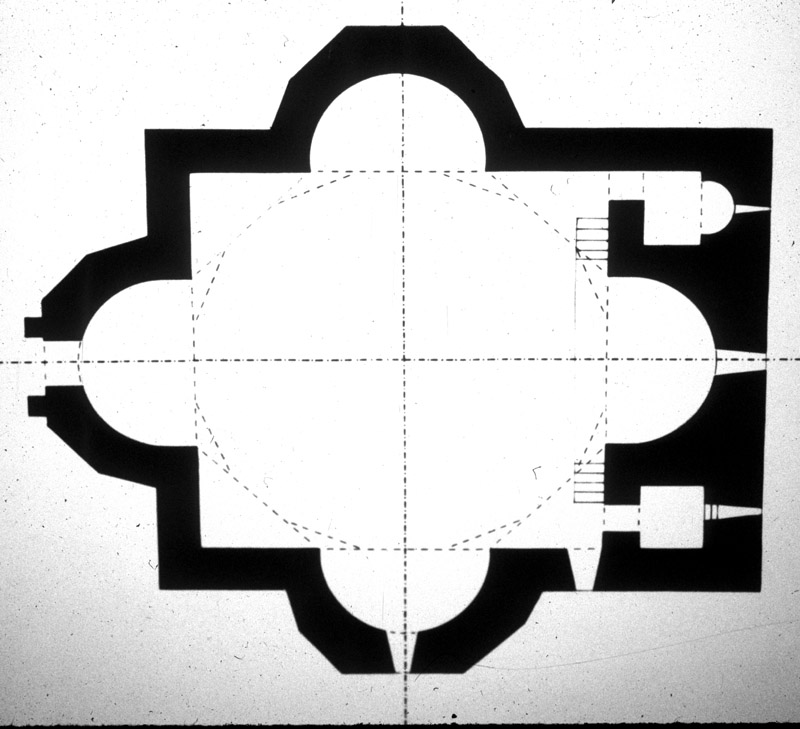
Floorplan -
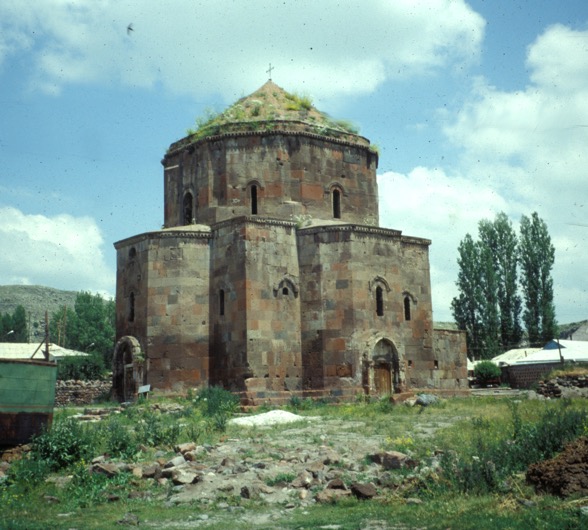
Mastara -
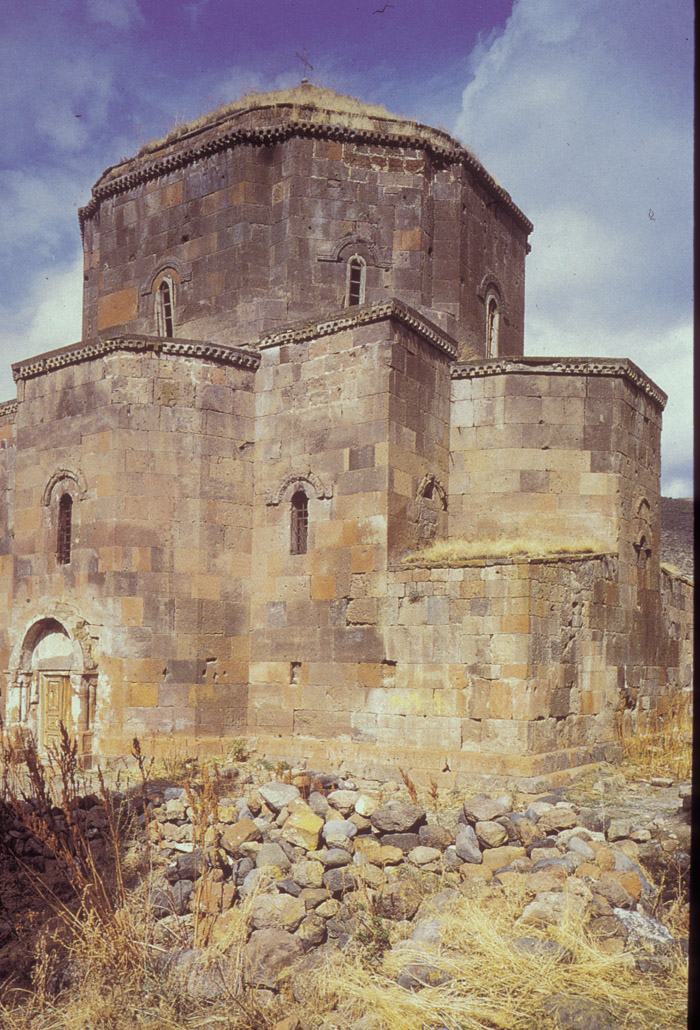
Exterior view -
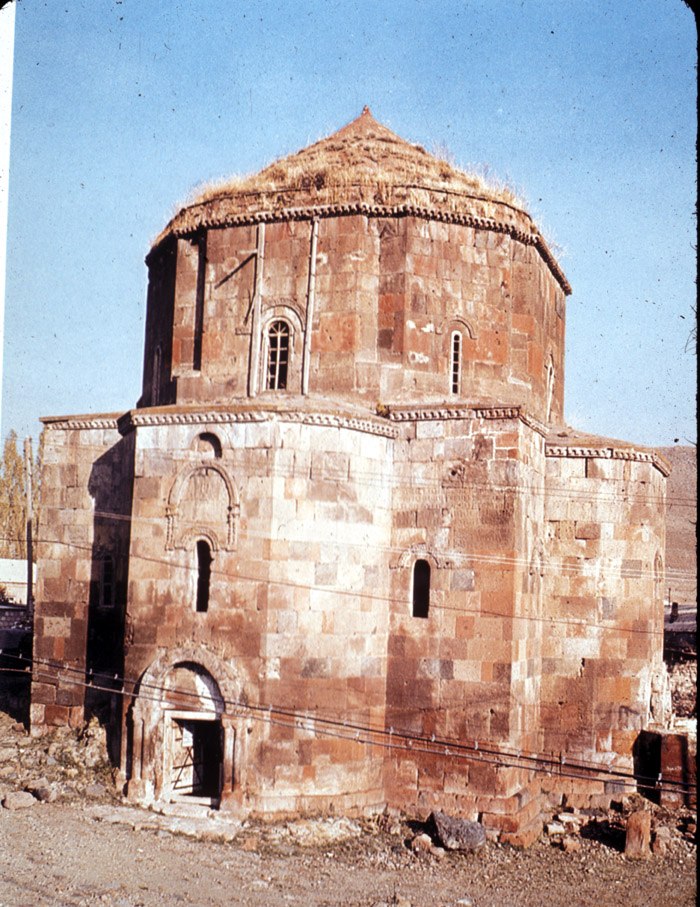
Exterior, Entrance -
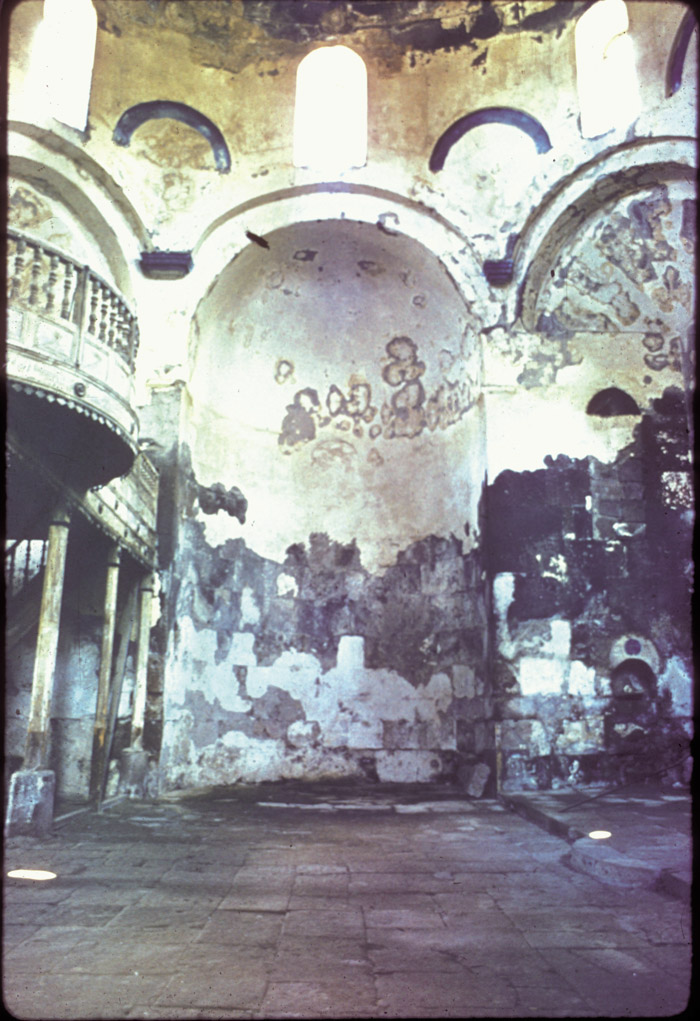
Interior view